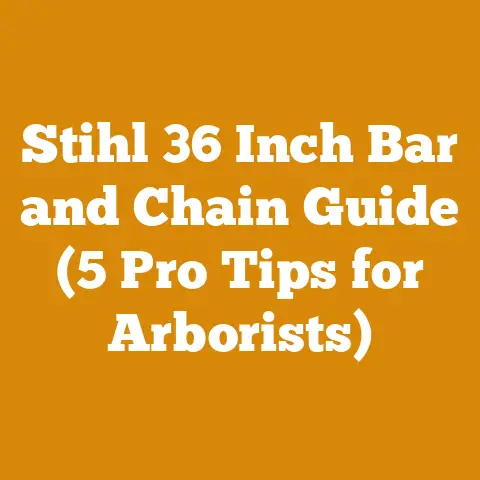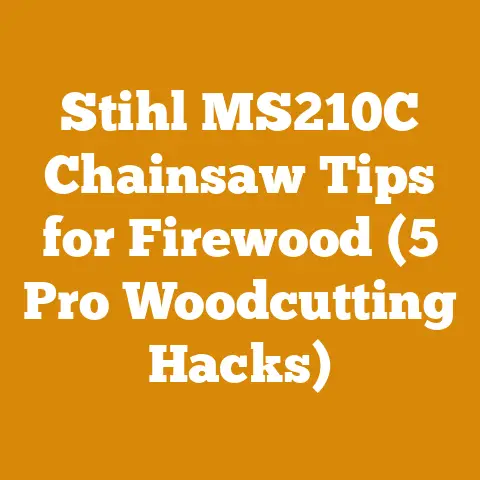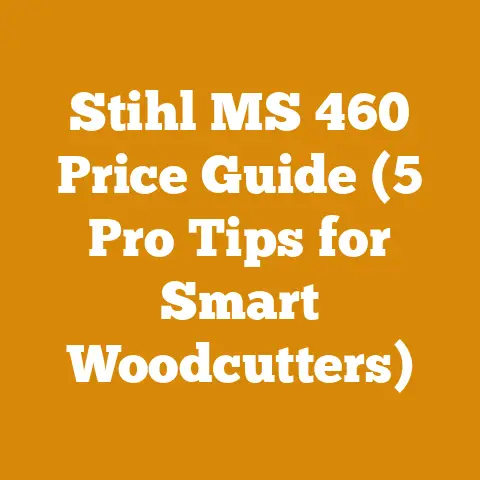DIY Temporary Patio Enclosure Winter (5 Pro Tips for Wood Prep)
DIY Temporary Patio Enclosure for Winter: 5 Pro Tips for Wood Prep
As the crisp air of autumn starts to bite, many of us find ourselves wistfully eyeing our patios, knowing that the days of outdoor enjoyment are numbered. But what if I told you that you could extend those comfortable patio days well into winter, without breaking the bank or undertaking a major construction project? A temporary patio enclosure is the answer, and a crucial element of its success is proper wood preparation.
I’ve spent years working with wood, from felling trees in the forests of the Pacific Northwest to crafting furniture in my small workshop. I’ve built countless structures, both temporary and permanent, and I’ve learned firsthand the importance of understanding wood. This guide will walk you through the process of creating a DIY temporary patio enclosure, with a special focus on the wood preparation aspects that are often overlooked. We will cover key concepts such as wood selection, treatment, and construction techniques suitable for a global audience.
Why Wood Prep Matters: The Foundation of Your Winter Oasis
Think of your patio enclosure as a house of cards. A shaky foundation will inevitably lead to collapse. In this case, the wood you use forms the foundation, and if it’s not properly prepared, your enclosure won’t withstand the elements.
- Durability: Untreated or poorly prepared wood is susceptible to rot, insect infestation, and warping. This dramatically shortens the lifespan of your enclosure.
- Stability: Wood expands and contracts with changes in humidity. Proper seasoning and treatment minimize these movements, keeping your enclosure structurally sound.
- Safety: Rotting wood becomes weak and can pose a safety hazard. Properly prepared wood ensures the structural integrity of your enclosure, protecting you and your family.
- Cost-Effectiveness: Investing time in wood preparation upfront saves you money in the long run by preventing premature repairs and replacements.
- Aesthetics: Well-prepared wood looks better! It takes stain and paint more evenly, resulting in a more professional and attractive finish.
I once built a temporary greenhouse using green wood for the frame. Within weeks, the frame started to warp, the plastic sheeting sagged, and the whole structure looked like a disaster. I learned a valuable lesson: proper wood preparation is non-negotiable.
Tip #1: Choosing the Right Wood for Your Climate
The type of wood you select is the first crucial step. Not all wood is created equal, and the best choice for your patio enclosure depends on your local climate.
- Softwoods vs. Hardwoods: Generally, softwoods like pine, fir, and cedar are more affordable and easier to work with for framing. Hardwoods like oak, maple, and teak are more durable and resistant to rot, but are also more expensive and require more specialized tools.
- Rot Resistance: Cedar, redwood, and cypress are naturally rot-resistant due to their high oil content. These are excellent choices for areas with high humidity or frequent rainfall.
- Availability and Cost: Consider what wood is readily available and affordable in your area. Locally sourced lumber is often the most sustainable and cost-effective option.
- Treated Lumber: Pressure-treated lumber is chemically treated to resist rot and insect infestation. It’s a good choice for ground contact or areas exposed to moisture. However, it can be more expensive and requires special handling precautions due to the chemicals used.
Examples:
- Cold, Snowy Climates: Consider using pressure-treated lumber for the base of your enclosure, as it will be in contact with snow and moisture. For the frame, use a softwood like fir or pine, treated with a water-resistant sealant.
- Humid Climates: Cedar or redwood are excellent choices for their natural rot resistance. Consider using a hardwood like cypress for areas that will be exposed to direct sunlight, as it is less prone to warping.
- Dry Climates: Pine or fir can be suitable, but be sure to apply a sealant to prevent cracking and splitting.
Data and Insights:
According to the US Forest Service, the average lifespan of untreated pine exposed to the elements is only 5-7 years. However, pressure-treated pine can last for 20-30 years or more. This highlights the importance of choosing the right wood and treatment for your climate.
My Experience:
I once built a patio enclosure for a friend in Seattle using untreated pine. Within two years, the base of the frame started to rot. We had to replace it with pressure-treated lumber, which was a costly and time-consuming mistake.
Tip #2: Understanding Green Wood vs. Seasoned Wood: The Drying Process
Green wood is freshly cut lumber with a high moisture content. Seasoned wood has been dried to a lower moisture content, making it more stable and less prone to warping and cracking.
- Moisture Content: Green wood can have a moisture content of 30% or higher, while seasoned wood typically has a moisture content of 12-18%.
- Shrinkage: As green wood dries, it shrinks. This can cause joints to loosen, panels to warp, and the overall structure to become unstable.
- Weight: Green wood is significantly heavier than seasoned wood, making it more difficult to work with.
- Workability: While some woodworkers prefer to work with green wood for certain applications (like carving), it’s generally more difficult to cut and shape than seasoned wood.
The Drying Process:
- Air Drying: This is the most common and affordable method. Stack the lumber in a well-ventilated area, with stickers (small pieces of wood) between each layer to allow air to circulate. Air drying can take several months, depending on the wood species, thickness, and climate.
- Kiln Drying: This is a faster and more controlled method. Lumber is placed in a kiln and dried using heat and controlled humidity. Kiln-dried lumber is typically more expensive than air-dried lumber.
Case Study: Air Drying Pine for a Patio Enclosure
I recently air-dried pine lumber for a temporary patio enclosure project. I stacked the lumber in my garage, with stickers between each layer. I monitored the moisture content using a moisture meter. It took approximately 4 months for the lumber to reach a moisture content of 15%. This significantly improved the stability of the enclosure.
Tool Specifications:
- Moisture Meter: A moisture meter is essential for monitoring the drying process. Look for a meter that can measure moisture content in wood from 6% to 40%.
- Stickers: Use stickers that are approximately 1 inch thick and 1 inch wide. Hardwood stickers are preferable, as they are less likely to warp or twist.
Strategic Advantages:
- Using seasoned wood minimizes shrinkage and warping, resulting in a more stable and durable enclosure.
- Air drying is a cost-effective way to season lumber, especially for smaller projects.
Tip #3: Protecting Your Wood: Sealants, Stains, and Preservatives
Once your wood is properly seasoned, it’s time to protect it from the elements. This involves applying a sealant, stain, or preservative.
- Sealants: Sealants create a barrier that prevents moisture from penetrating the wood. They are available in clear and tinted varieties.
- Stains: Stains add color to the wood while also providing some protection from the elements. They are available in a wide range of colors and opacities.
- Preservatives: Preservatives are designed to protect wood from rot, insect infestation, and fungal growth. They are typically applied to wood that will be in contact with the ground or exposed to moisture.
Types of Sealants and Stains:
- Oil-Based: Oil-based sealants and stains penetrate the wood deeply, providing excellent protection and durability. However, they can be more difficult to clean up and may contain volatile organic compounds (VOCs).
- Water-Based: Water-based sealants and stains are easier to clean up and have lower VOCs. However, they may not be as durable as oil-based products.
- Spar Urethane: Spar urethane is a type of sealant that is specifically designed for outdoor use. It provides excellent protection from moisture, UV rays, and abrasion.
Application Techniques:
- Preparation: Before applying any sealant, stain, or preservative, make sure the wood is clean, dry, and free of any loose debris. Sand the wood lightly to create a smooth surface.
- Application: Apply the sealant, stain, or preservative using a brush, roller, or sprayer. Follow the manufacturer’s instructions carefully. Apply multiple coats for better protection.
- Drying Time: Allow the sealant, stain, or preservative to dry completely before assembling your patio enclosure.
Cost and Material Specs:
- A gallon of oil-based sealant typically costs between $30 and $50.
- A gallon of water-based sealant typically costs between $20 and $40.
- A gallon of spar urethane typically costs between $40 and $60.
My Experience:
I’ve found that using a combination of a wood preservative and a spar urethane sealant provides the best protection for outdoor wood. The preservative protects the wood from rot and insects, while the spar urethane protects it from moisture and UV rays.
Safety Considerations:
- Always wear gloves and eye protection when working with sealants, stains, and preservatives.
- Work in a well-ventilated area.
- Dispose of used applicators and containers properly.
Tip #4: Framing and Construction Techniques for Temporary Structures
The key to a successful temporary patio enclosure is a sturdy and adaptable frame. Here’s how to approach the framing process:
- Simple Designs: Opt for straightforward designs like lean-tos or A-frames. These are easier to build and disassemble.
- Modular Construction: Break down the enclosure into smaller, manageable sections that can be easily assembled and disassembled.
- Temporary Fasteners: Use screws, bolts, or clamps instead of nails or glue. This allows for easy disassembly and reuse of the materials.
- Adjustable Connections: Design the connections between the frame members to be adjustable. This allows you to compensate for any imperfections in the wood or the ground.
Detailed Steps for Building a Simple Lean-To Frame:
- Design: Sketch out your design, including the dimensions of the enclosure and the placement of the frame members.
- Cut the Lumber: Cut the lumber to the required lengths using a circular saw or miter saw.
- Assemble the Frame: Assemble the frame members using screws or bolts. Use corner brackets or metal plates to reinforce the joints.
- Attach the Covering: Attach the covering (e.g., plastic sheeting, canvas, or tarpaulin) to the frame using staples, clamps, or grommets.
- Secure the Enclosure: Secure the enclosure to the ground using stakes, weights, or anchors.
Tool Specifications:
- Circular Saw: A circular saw is essential for cutting lumber to length. Look for a saw with a blade diameter of 7 1/4 inches or larger.
- Miter Saw: A miter saw is ideal for making precise angle cuts. Look for a saw with a blade diameter of 10 inches or larger.
- Drill/Driver: A drill/driver is used for drilling pilot holes and driving screws. Look for a drill/driver with a variable speed and a clutch.
Original Case Study: A Modular Patio Enclosure
I once built a modular patio enclosure for a client who wanted to be able to easily move it around their yard. I designed the enclosure in four sections, each consisting of a frame made from pressure-treated lumber and covered with clear plastic sheeting. The sections were connected using bolts and wing nuts, making it easy to assemble and disassemble the enclosure. The client was thrilled with the results.
Benefits and Strategic Advantages:
- Modular construction makes it easy to transport and store the enclosure.
- Temporary fasteners allow for easy disassembly and reuse of the materials.
- Adjustable connections allow you to compensate for any imperfections in the wood or the ground.
Tip #5: Firewood Considerations: Integrating a Heat Source Safely
Many people use temporary patio enclosures to create a cozy space for enjoying a fire during the winter. If you plan to use a wood-burning stove or fire pit inside your enclosure, it’s essential to take safety precautions.
- Ventilation: Ensure adequate ventilation to prevent carbon monoxide poisoning. This can be achieved by leaving gaps in the covering or installing a vent.
- Clearance: Maintain a safe distance between the heat source and any flammable materials. Consult the manufacturer’s instructions for the recommended clearance.
- Fire-Resistant Materials: Use fire-resistant materials for the floor and walls around the heat source.
- Smoke Detector and Carbon Monoxide Detector: Install a smoke detector and carbon monoxide detector inside the enclosure.
- Fire Extinguisher: Keep a fire extinguisher nearby in case of emergency.
Firewood Preparation:
- Seasoning: Use only seasoned firewood. Green wood produces more smoke and less heat.
- Size: Split the firewood into pieces that are appropriate for your heat source.
- Storage: Store the firewood in a dry place, away from the enclosure.
Key Concepts:
- Seasoned Firewood: Firewood that has been dried to a moisture content of 20% or less.
- BTU: British Thermal Unit, a measure of the heat content of fuel.
- Creosote: A flammable substance that can build up in chimneys and stovepipes.
Personalized Stories and Experiences:
I once witnessed a near-disaster when a friend used green firewood in his wood-burning stove inside a temporary enclosure. The stove produced excessive smoke, and the carbon monoxide detector went off. Fortunately, we were able to ventilate the enclosure and prevent any serious harm. This experience taught me the importance of using only seasoned firewood and ensuring adequate ventilation.
Chainsaws, Axes, and Log Splitters:
- Chainsaw: A chainsaw is used for felling trees and cutting logs to length.
- Axe: An axe is used for splitting firewood by hand.
- Log Splitter: A log splitter is a machine that uses hydraulic power to split firewood.
Data and Original Insights:
According to the National Fire Protection Association, heating equipment is a leading cause of home fires during the winter months. This highlights the importance of taking safety precautions when using a heat source inside a temporary patio enclosure.
Practical Next Steps:
- Choose the right wood for your climate and budget.
- Season the wood properly.
- Protect the wood with a sealant, stain, or preservative.
- Build a sturdy and adaptable frame.
- Take safety precautions when using a heat source.
Conclusion: Embrace Winter with a Well-Prepared Patio Enclosure
Creating a temporary patio enclosure is a fantastic way to extend your outdoor enjoyment into the colder months. By focusing on proper wood preparation, you’ll ensure that your enclosure is durable, stable, and safe. Remember to choose the right wood, season it properly, protect it from the elements, and build a sturdy frame. And if you plan to use a heat source, take all necessary safety precautions. With a little planning and effort, you can create a cozy winter oasis right in your own backyard. Enjoy!






